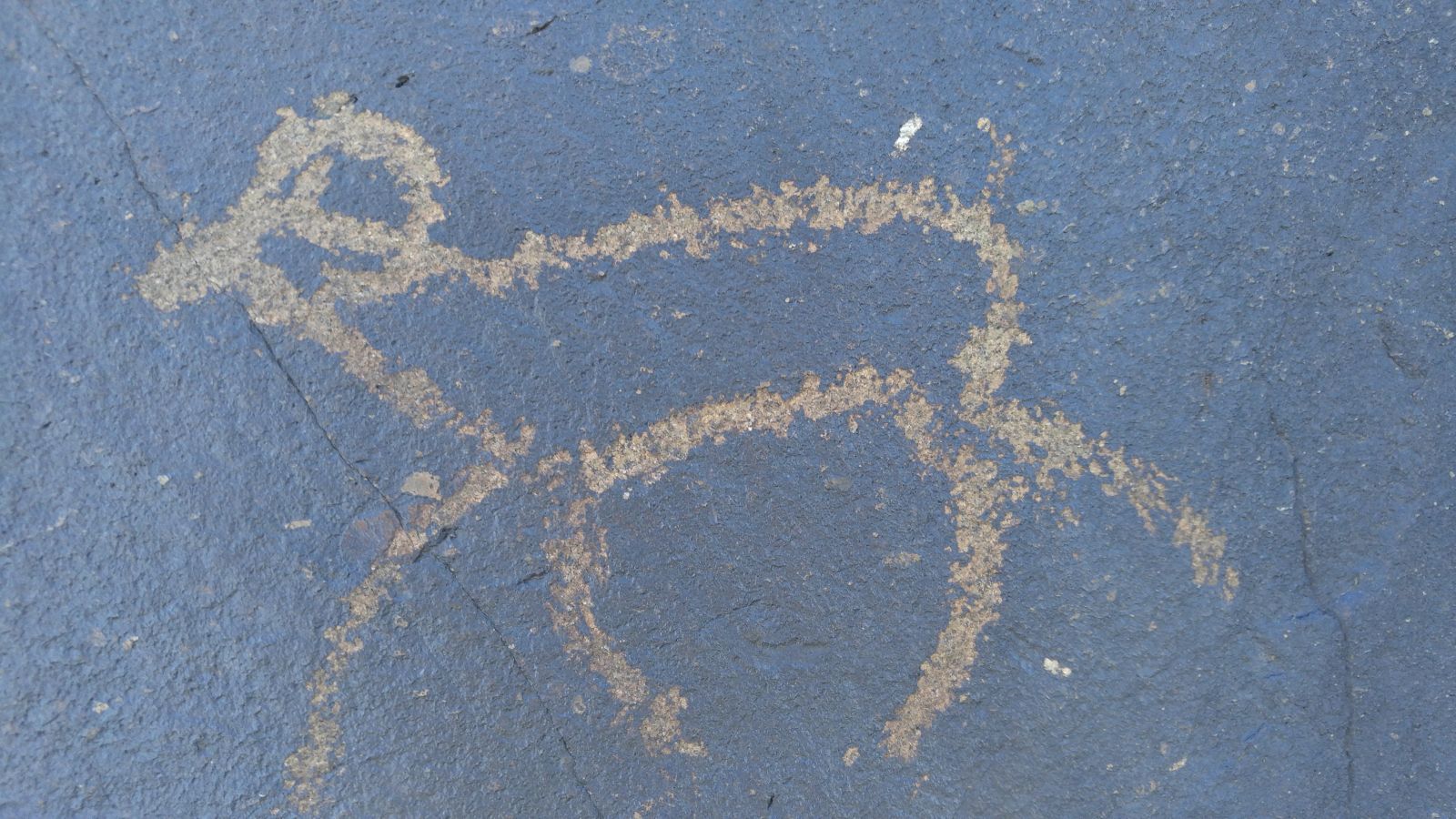The site and its petroglyphs: The petroglyphs of Khavtsgait are found in Bulgan Sum of South Gobi (Ömnögowi) province in Mongolia. They are found in the heights of the Boginy Khyar ridge overlooking the plain and the now mostly abandoned site of Khavtsgait Bag, an old brigade center during the socialist period.
The Khavtsgait site was noted in surveys done in the 1960s by the Soviet archaeologist A.P. Okladnikov, but was not described at that time. In 2016, Mongolian researchers conducted a full-scale archaeological survey of the area, identifying drawings on 84 different rock faces within a 300-meter radius. Tsend and Amgalanbat also identified with 2 km of the site a range of 28 different funerary monuments, mostly dating to the Bronze Age or early Iron Age. These included 7 figure-shaped tomb culture burials (shorgooljin or literally “ant” burials), 6 kheregsuur's, 3 slab grave burials, 10 graves with a circular formation (dugui daraastai) and 2 which were un-characterized due to plundering.
At the site itself, the petroglyphs are found on outcrops of rocks situated at the ridge top. They are thus easily accessible to someone at the top of the ridge; the ridge itself is a slightly arduous climb from the plains to the north. Most of the petroglyphs found on the rocky outcrops are fairly typical standing wild animals such as ibex and deer. These are done with direct pecking either in outline or as stick figures with fairly thick lines. The overall assemblage of petroglyphs is consistent with a Bronze and early Iron Age date.

The Khavtsgait Iron Age rock drawings indicate that ideas associating pastoralist camps with funerary contexts and cultic scenes focusing on a female deity may be characteristic of the Iron Age pastoralists of the Mongolian plateau just as they were of the Altai pastoralists, Scythians, and other people further to the west. This confirms once again the close linkage of Iron Age Mongolia, and particularly the Xiongnu empire, with the west (Di Cosmo, 2011).10 Yet it also highlights the considerable change in artistic styles and perhaps attendant cultural ideas that occurred from the Bronze and Early Iron Age into the Late Iron Age.

Source: Archaeological Research Article by Christopher P Atwood
Download full article:








